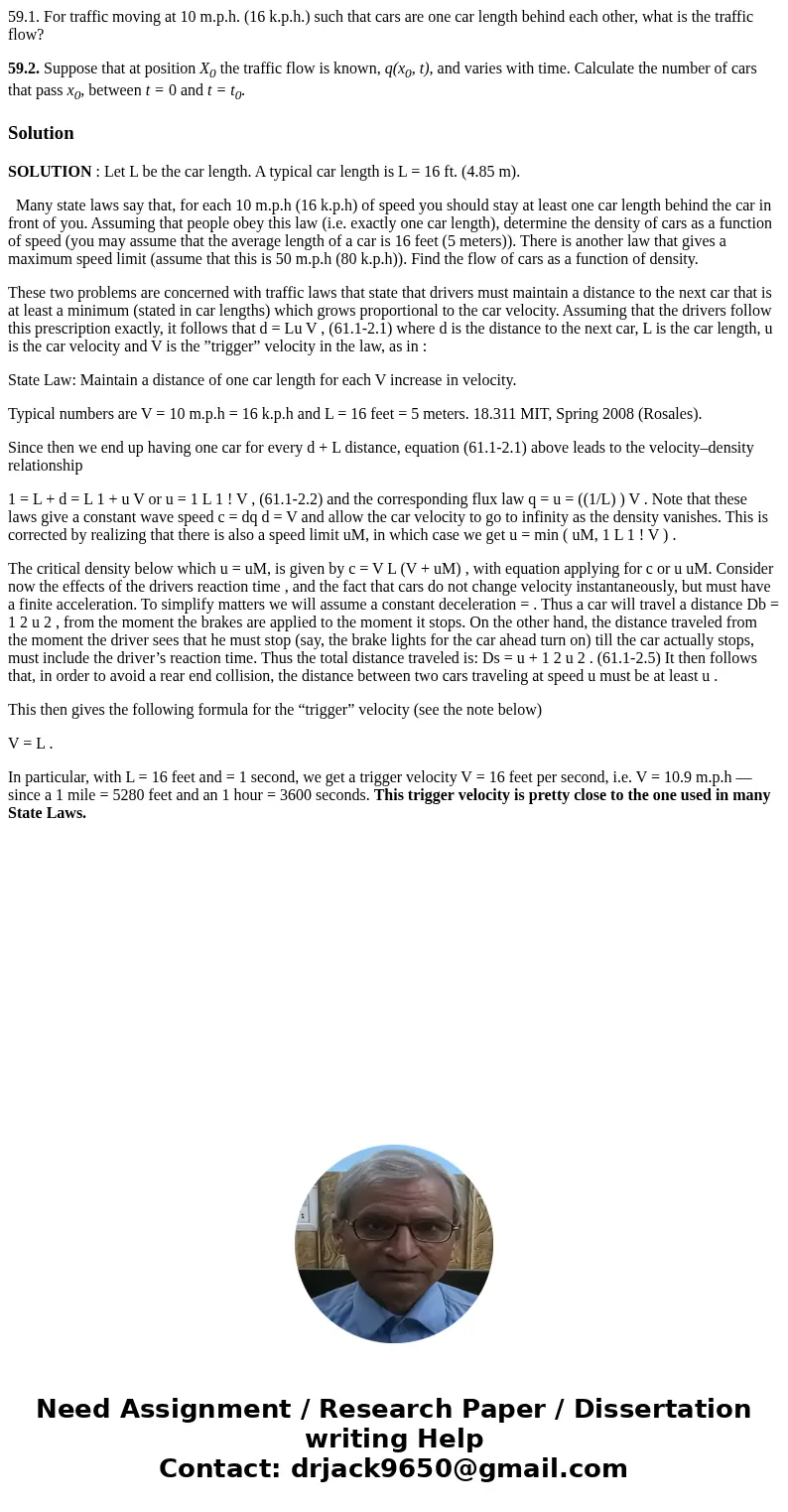591 For traffic moving at 10 mph 16 kph such that cars are o
59.1. For traffic moving at 10 m.p.h. (16 k.p.h.) such that cars are one car length behind each other, what is the traffic flow?
59.2. Suppose that at position X0 the traffic flow is known, q(x0, t), and varies with time. Calculate the number of cars that pass x0, between t = 0 and t = t0.
Solution
SOLUTION : Let L be the car length. A typical car length is L = 16 ft. (4.85 m).
Many state laws say that, for each 10 m.p.h (16 k.p.h) of speed you should stay at least one car length behind the car in front of you. Assuming that people obey this law (i.e. exactly one car length), determine the density of cars as a function of speed (you may assume that the average length of a car is 16 feet (5 meters)). There is another law that gives a maximum speed limit (assume that this is 50 m.p.h (80 k.p.h)). Find the flow of cars as a function of density.
These two problems are concerned with traffic laws that state that drivers must maintain a distance to the next car that is at least a minimum (stated in car lengths) which grows proportional to the car velocity. Assuming that the drivers follow this prescription exactly, it follows that d = Lu V , (61.1-2.1) where d is the distance to the next car, L is the car length, u is the car velocity and V is the ”trigger” velocity in the law, as in :
State Law: Maintain a distance of one car length for each V increase in velocity.
Typical numbers are V = 10 m.p.h = 16 k.p.h and L = 16 feet = 5 meters. 18.311 MIT, Spring 2008 (Rosales).
Since then we end up having one car for every d + L distance, equation (61.1-2.1) above leads to the velocity–density relationship
1 = L + d = L 1 + u V or u = 1 L 1 ! V , (61.1-2.2) and the corresponding flux law q = u = ((1/L) ) V . Note that these laws give a constant wave speed c = dq d = V and allow the car velocity to go to infinity as the density vanishes. This is corrected by realizing that there is also a speed limit uM, in which case we get u = min ( uM, 1 L 1 ! V ) .
The critical density below which u = uM, is given by c = V L (V + uM) , with equation applying for c or u uM. Consider now the effects of the drivers reaction time , and the fact that cars do not change velocity instantaneously, but must have a finite acceleration. To simplify matters we will assume a constant deceleration = . Thus a car will travel a distance Db = 1 2 u 2 , from the moment the brakes are applied to the moment it stops. On the other hand, the distance traveled from the moment the driver sees that he must stop (say, the brake lights for the car ahead turn on) till the car actually stops, must include the driver’s reaction time. Thus the total distance traveled is: Ds = u + 1 2 u 2 . (61.1-2.5) It then follows that, in order to avoid a rear end collision, the distance between two cars traveling at speed u must be at least u .
This then gives the following formula for the “trigger” velocity (see the note below)
V = L .
In particular, with L = 16 feet and = 1 second, we get a trigger velocity V = 16 feet per second, i.e. V = 10.9 m.p.h — since a 1 mile = 5280 feet and an 1 hour = 3600 seconds. This trigger velocity is pretty close to the one used in many State Laws.

 Homework Sourse
Homework Sourse